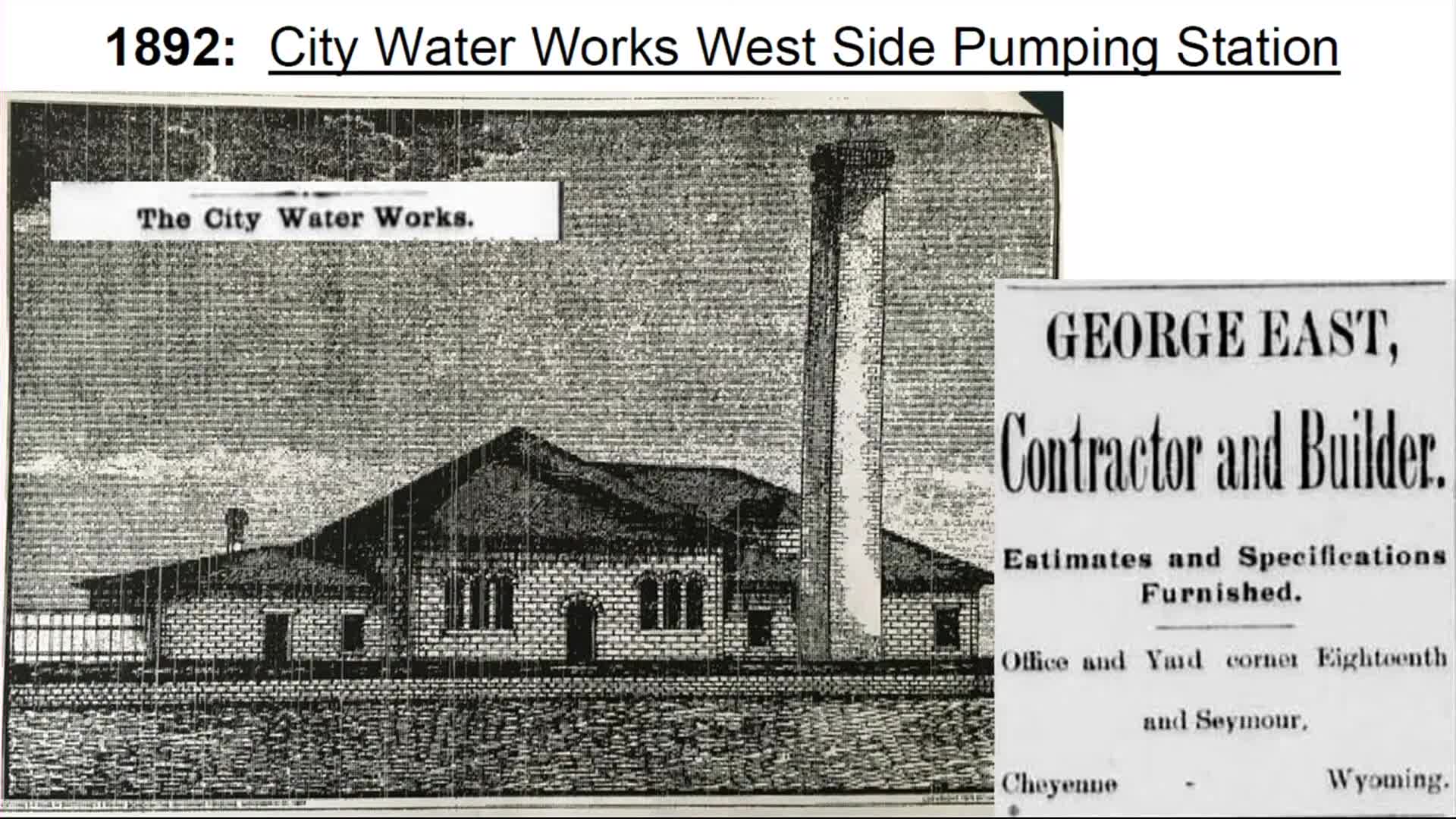Cheyenne builds new pump house to improve water pressure and living conditions
July 04, 2025 | Cheyenne, Laramie County, Wyoming
This article was created by AI summarizing key points discussed. AI makes mistakes, so for full details and context, please refer to the video of the full meeting. Please report any errors so we can fix them. Report an error »

The Cheyenne City Council held a work session on July 4, 2025, focusing on the history of the Pumphouse in collaboration with Cheyenne Historic Inc. The meeting provided insights into the construction and significance of the second pump house, which was essential for the city's water supply and infrastructure.
The discussion began with a financial overview, noting that the original plans for the pump house were drawn up by city engineer Fred Bond, with a budget of approximately $12,000 at the time. The construction contract was awarded to local contractor George East for $5,278, equivalent to about $180,000 today. Although East aimed to complete the project in one month, delays due to winter weather extended the timeline to six months.
The need for a new pump house arose from several factors. The original facility, located at 20 Eighth and Central Avenue, was deemed an eyesore and delivered insufficient water pressure, which affected fire hydrant reliability and indoor plumbing for local businesses. Additionally, the untreated water often contained unpleasant tastes and odors, with reports of small fish clogging indoor pipes. The population of Cheyenne had surged from 6,500 in 1883 to 9,000 by 1886, further necessitating improved water infrastructure.
The new pump house allowed for better control over water sourced from nearby lakes, including Sloane's Lake and Lake Minnehaha. Water was to be transported through an extensive piping system to the Crow Creek Dam, where it would be filtered before reaching the newly constructed reservoir.
Upon its completion, the pump house received positive acclaim from local media, being described as one of the most attractive structures in Cheyenne. The architectural style, known as Richardson Romanesque, was characterized by its use of large cut stones and a hipped pyramidal roof, which provided stability against harsh weather conditions.
The meeting concluded with a reflection on the pump house's historical significance, noting that it served not only as a vital infrastructure component but also as a symbol of Cheyenne's growth and resilience. The council emphasized the importance of preserving such historical structures for future generations.
The discussion began with a financial overview, noting that the original plans for the pump house were drawn up by city engineer Fred Bond, with a budget of approximately $12,000 at the time. The construction contract was awarded to local contractor George East for $5,278, equivalent to about $180,000 today. Although East aimed to complete the project in one month, delays due to winter weather extended the timeline to six months.
The need for a new pump house arose from several factors. The original facility, located at 20 Eighth and Central Avenue, was deemed an eyesore and delivered insufficient water pressure, which affected fire hydrant reliability and indoor plumbing for local businesses. Additionally, the untreated water often contained unpleasant tastes and odors, with reports of small fish clogging indoor pipes. The population of Cheyenne had surged from 6,500 in 1883 to 9,000 by 1886, further necessitating improved water infrastructure.
The new pump house allowed for better control over water sourced from nearby lakes, including Sloane's Lake and Lake Minnehaha. Water was to be transported through an extensive piping system to the Crow Creek Dam, where it would be filtered before reaching the newly constructed reservoir.
Upon its completion, the pump house received positive acclaim from local media, being described as one of the most attractive structures in Cheyenne. The architectural style, known as Richardson Romanesque, was characterized by its use of large cut stones and a hipped pyramidal roof, which provided stability against harsh weather conditions.
The meeting concluded with a reflection on the pump house's historical significance, noting that it served not only as a vital infrastructure component but also as a symbol of Cheyenne's growth and resilience. The council emphasized the importance of preserving such historical structures for future generations.
View full meeting
This article is based on a recent meeting—watch the full video and explore the complete transcript for deeper insights into the discussion.
View full meeting